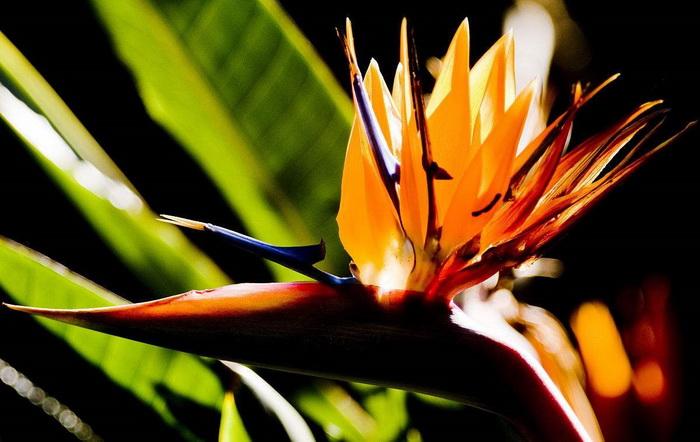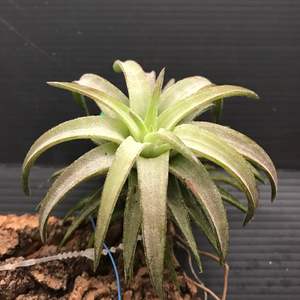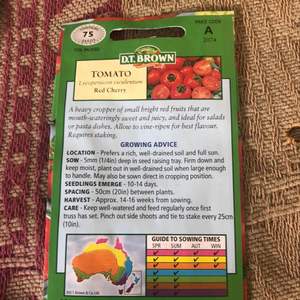文章
Miss Chen
2018年08月15日

Pampas Grass (Cortaderia selloana) creates a tall, flowing feature in your garden when in full bloom. Planting at the appropriate time for your geographical area is important if you want the plants to have tall 10-foot plumes by late summer. The grass thrives in warm temperatures and is a perennial in U.S. Department of Agriculture plant hardiness zones 8 through 10. Cooler growing zones can also plant pampas grass, but is will only grow as an annual. Pampas grass is considered invasive in some areas of the U.S.

Preparing Planting Area
Pampas grass produces long, feathery plumes and can have an aggressive growth pattern. Begin planting preparation by choosing a planting area that will not hinder the growth or block other plants. Clear the area and work the soil to a minimum depth of 12 inches about one month before the desired planting date to give the soil time to settle.
Dividing Existing Plants
Pampas grass is a clump-growing plant that is easily divided to obtain new plants. Dividing plants in early spring offers the best results with transplanting and root establishment before the height of the summer growing season. Remove the entire plant from the soil by digging around the root mass and gently pulling out the plant. Carefully break the root mass into smaller clumps that contain both root and grass stems. Plant the pampas grass transplants in a new location immediately and at the same depth they were previously growing. Wear gloves when handling pampas grass, as the blades are sharp and can cut your hands.
Starting From Seed
Planting pampas grass from seeds can begin during the late winter months. This gives the seeds enough time to germinate and grow into strong seedlings before planting them in an outdoor garden in spring. Most plants do not produce viable seeds because both male and female plants are required for pollination.
Planting Seedlings Depends on Climate
The date pampas grass seedlings are planted outdoors is dependent on the geographical area. USDA zones warmer than zone 7 rarely get freezing temperatures in the spring that will damage the plants. Gardeners in these warmer USDA zones can successfully plant pampas grass year-round. Those in cooler USDA zones should wait until after the last hard frost of the spring season.

Benefits Of Containers
Use large pots with good drainage holes to grow pampas grass if you are concerned about the plant spreading or becoming too aggressive in your garden. Growing in pots allows you to plant the grass earlier in spring, since you can easily move the pot indoors or into a protected area if there is a risk of damaging temperatures.

Preparing Planting Area
Pampas grass produces long, feathery plumes and can have an aggressive growth pattern. Begin planting preparation by choosing a planting area that will not hinder the growth or block other plants. Clear the area and work the soil to a minimum depth of 12 inches about one month before the desired planting date to give the soil time to settle.
Dividing Existing Plants
Pampas grass is a clump-growing plant that is easily divided to obtain new plants. Dividing plants in early spring offers the best results with transplanting and root establishment before the height of the summer growing season. Remove the entire plant from the soil by digging around the root mass and gently pulling out the plant. Carefully break the root mass into smaller clumps that contain both root and grass stems. Plant the pampas grass transplants in a new location immediately and at the same depth they were previously growing. Wear gloves when handling pampas grass, as the blades are sharp and can cut your hands.
Starting From Seed
Planting pampas grass from seeds can begin during the late winter months. This gives the seeds enough time to germinate and grow into strong seedlings before planting them in an outdoor garden in spring. Most plants do not produce viable seeds because both male and female plants are required for pollination.
Planting Seedlings Depends on Climate
The date pampas grass seedlings are planted outdoors is dependent on the geographical area. USDA zones warmer than zone 7 rarely get freezing temperatures in the spring that will damage the plants. Gardeners in these warmer USDA zones can successfully plant pampas grass year-round. Those in cooler USDA zones should wait until after the last hard frost of the spring season.

Benefits Of Containers
Use large pots with good drainage holes to grow pampas grass if you are concerned about the plant spreading or becoming too aggressive in your garden. Growing in pots allows you to plant the grass earlier in spring, since you can easily move the pot indoors or into a protected area if there is a risk of damaging temperatures.
0
0
文章
Miss Chen
2018年08月15日

No matter where you live, you can quickly bring a taste of the tropics to your indoor or outdoor garden by growing bird of paradise. Known botanically as Strelitzia reginae, this colorful, eye-catching plant lights up any garden.

Bird of Paradise Features
Showy bird of paradise flowers consist of orange, blue and white, which form to resemble an exotic bird's beak. There's also a variety that has all white flowers. Each bird of paradise flower can last up to two weeks on or off the plant. The plant's foliage is also dramatic. The large, green, textural leaves make a statement even when the plant isn't blooming.
Bird of Paradise History
Native to South Africa, bird of paradise is widely cultivated throughout South America today. The plant got its botanical name when it was introduced to England in 1773 by Sir Joseph Banks, who ran Kew Gardens at the time. He named the plant Strelitzia after Queen Charlotte, wife of George III. She lived at Kew Gardens for several years.
Where to Grow Bird of Paradise
Bird of paradise makes an excellent accent in the landscape. Use the plant around pools and spas to add a tropical feel or put bird of paradise in a pot and display it as a focal point. When grown in containers, bird of paradise can be displayed on patios, balconies and decks.
Bird of paradise requires full sun outdoors to thrive. The plant is frost sensitive, so it can only be grown outdoors year-round in frost-free climates, such as zones 9 through 12. If you wish to grow bird of paradise outdoors in other zones, do so in the spring and summer when night temperatures are 60 degrees and above. Grow the plant in a container and bring it indoors when nighttime temperatures drop in fall.
Bird of Paradise Grown as a Houseplant
Bird of paradise does well when grown indoors as a houseplant, as such a warm environment is ideal. The plant requires a bright, sunny location, such as in front of an eastern or southern window. Bird of paradise also does well when grown under full-spectrum lighting.
Bird of Paradise Care and Maintenance
With consistent care, bird of paradise can thrive. Though the plant is drought tolerant once established, it grows best when you keep the soil moist but not soggy. This will generally require that you water the plant once a week when grown in the ground. Container-grown plants will require more frequent watering, especially when temperatures are high.

Fertilize bird of paradise once in spring and again in summer with an all-purpose fertilizer designed for flowering plants. Always follow the package directions on the fertilizer, as too much can burn plant roots and damage the plant.
Bird of paradise is a self-cleaning plant that tends to shed its own leaves when necessary. That means it rarely needs pruning. When you do prune, remove dead foliage and spent flower stalks.

Bird of Paradise Features
Showy bird of paradise flowers consist of orange, blue and white, which form to resemble an exotic bird's beak. There's also a variety that has all white flowers. Each bird of paradise flower can last up to two weeks on or off the plant. The plant's foliage is also dramatic. The large, green, textural leaves make a statement even when the plant isn't blooming.
Bird of Paradise History
Native to South Africa, bird of paradise is widely cultivated throughout South America today. The plant got its botanical name when it was introduced to England in 1773 by Sir Joseph Banks, who ran Kew Gardens at the time. He named the plant Strelitzia after Queen Charlotte, wife of George III. She lived at Kew Gardens for several years.
Where to Grow Bird of Paradise
Bird of paradise makes an excellent accent in the landscape. Use the plant around pools and spas to add a tropical feel or put bird of paradise in a pot and display it as a focal point. When grown in containers, bird of paradise can be displayed on patios, balconies and decks.
Bird of paradise requires full sun outdoors to thrive. The plant is frost sensitive, so it can only be grown outdoors year-round in frost-free climates, such as zones 9 through 12. If you wish to grow bird of paradise outdoors in other zones, do so in the spring and summer when night temperatures are 60 degrees and above. Grow the plant in a container and bring it indoors when nighttime temperatures drop in fall.
Bird of Paradise Grown as a Houseplant
Bird of paradise does well when grown indoors as a houseplant, as such a warm environment is ideal. The plant requires a bright, sunny location, such as in front of an eastern or southern window. Bird of paradise also does well when grown under full-spectrum lighting.
Bird of Paradise Care and Maintenance
With consistent care, bird of paradise can thrive. Though the plant is drought tolerant once established, it grows best when you keep the soil moist but not soggy. This will generally require that you water the plant once a week when grown in the ground. Container-grown plants will require more frequent watering, especially when temperatures are high.

Fertilize bird of paradise once in spring and again in summer with an all-purpose fertilizer designed for flowering plants. Always follow the package directions on the fertilizer, as too much can burn plant roots and damage the plant.
Bird of paradise is a self-cleaning plant that tends to shed its own leaves when necessary. That means it rarely needs pruning. When you do prune, remove dead foliage and spent flower stalks.
0
0





















